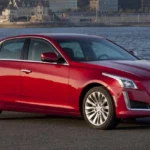Cold legs? Long winter days outdoors? Whether you’re hiking, skiing, working construction, or just hate the winter chill, heated pants are the perfect solution to keep your lower body warm and mobile. They’re smart, stylish, and super practical—ideal for both extreme adventurers and everyday users alike.
Heated pants use advanced heating technology powered by rechargeable batteries. With adjustable temperature levels and flexible designs, they provide warmth where it’s needed most—without adding bulk.
What Are Heated Pants?
Heated pants are trousers or leggings embedded with thin, flexible heating elements, typically made from carbon fiber or graphene. These heating wires are connected to a battery pack, usually stored in a side pocket. Once powered on, they provide direct warmth to your thighs, knees, and sometimes your lower back.
They’re ideal for cold-weather sports, job sites, or even casual wear during freezing winter days.
Top Benefits of Heated Pants
1. Full-Leg Warmth
Unlike heated jackets that focus on your core, heated pants warm your lower half—especially your thighs and knees, which often suffer most in the cold.
2. Long Battery Life
Most heated pants offer 6–10 hours of heating on a full charge. Some models even allow you to switch out batteries for extended use.
3. Adjustable Heat Settings
You can usually switch between 3 heat levels: low, medium, and high. Some premium options also feature smartphone control.
4. Lightweight and Flexible
These pants don’t feel stiff or heavy. They’re designed to move with you, so you can hike, climb, or shovel snow without restriction.
5. Weather Resistant
Many heated pants are made from windproof, water-resistant materials. They’re built to keep out cold air and moisture.
Who Should Use Heated Pants?
Outdoor workers (construction, delivery, security)
Hikers and campers exposed to cold mornings or snow
Skiers and snowboarders needing base-layer warmth
Hunters and fishers who stay still for long periods
Commuters and cyclists braving freezing temps
People with arthritis, Raynaud’s, or circulation issues
Key Features to Look For
1. Heating Zones
Most heated pants feature 2–4 heating zones. Look for models that target key muscle groups like thighs, knees, and the lower back.
2. Battery Capacity
Choose a model that offers 7–10 hours on low heat. Make sure the battery is compact, easy to recharge, and preferably removable.
3. Material & Insulation
Opt for pants made from a breathable yet weather-resistant fabric like polyester blends or softshell materials. Some offer fleece or thermal lining for extra insulation.
4. Fit & Comfort
Heated pants come in styles ranging from loose workwear to slim athletic leggings. Pick a fit that suits your activity—snug for layering, relaxed for outerwear.
5. Machine Washable
Most quality heated pants are washable. Always remove the battery before washing and follow the care label.
6. Safety Features
Built-in thermostats, auto shut-off timers, and overheat protection are essential for safe use during long wear.
Best Heated Pants of 2025
1. ORORO Heated Pant
Durable and water-resistant, these pants include heating zones in the knees and thighs with up to 10 hours of battery life. Great for skiing, working, or everyday winter use.
2. Venustas Heated Thermal Pant
Stylish, slim fit, and excellent for layering. Ideal for cold commutes, hiking, and casual wear with up to 9 hours of warmth.
3. Gobi Heat Base Layer Heated Pant
Designed to be worn under other clothing. Lightweight, soft, and perfect for outdoor sports or extended travel.
4. ActionHeat 5V Heated Work Pant
Built tough for the job site with reinforced seams and a durable shell. Provides serious heat and long battery life.
5. Dewbu Heated Pants
A rugged choice for snowmobiling, hunting, or snowboarding. Water-resistant outer shell, quick-heat tech, and adjustable waistband.
How to Use Heated Pants
Charge the Battery: Use the included charger and fully charge before first use.
Connect the Battery: Insert the battery into the dedicated pocket and plug it into the power cord.
Turn On & Adjust Heat: Press the power button to activate and cycle through heat settings—usually low (blue), medium (white), and high (red).
Wear Comfortably: Make sure the pants are snug but not tight to allow good heat transfer.
Wash Safely: Remove the battery before cleaning. Most are machine washable on a gentle cycle.
When to Wear Heated Pants
Cold weather hiking and trekking
Winter cycling and running
Early morning commutes or outdoor work
Ski resorts, hunting camps, or ice fishing trips
Outdoor festivals, Christmas markets, and events
Lounging at home on extra-cold days
Safety Tips for Heated Pants
Never use while sleeping unless rated safe for it
Do not wear if the heating elements are damaged
Always unplug before charging
Don’t use near water unless waterproof-rated
Avoid ironing or dry cleaning
Reputable brands include automatic shut-off and heat regulation systems to prevent overheating and maximize safety.
Pros and Cons of Heated Pants
| Pros | Cons |
|---|---|
| Instant warmth | Requires battery charging |
| Great for layering or solo wear | Battery adds slight weight |
| Ideal for sports and outdoor work | Higher-end models can be pricey |
| Long-lasting heat (6–10+ hours) | Not all models are waterproof |
| Machine washable in most cases | Fit may vary by brand or style |
Final Thoughts: Warm Legs, Happy Life
Heated pants are a game-changer for anyone who spends time in the cold. They keep your legs warm, improve circulation, and allow you to stay outside longer—whether you’re exploring, commuting, or working. With long battery life, easy controls, and flexible designs, they’re the perfect companion for winter survival and comfort.
If you’re tired of freezing from the waist down, it’s time to power up your winter gear.
Invest in comfort. Stay warm. Keep moving—with the best heated pants of 2025.










